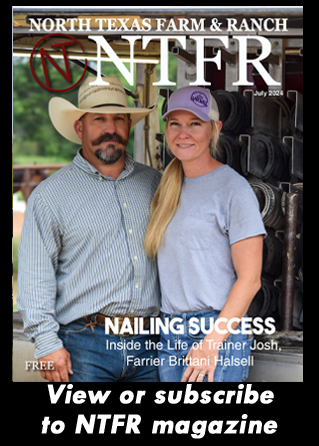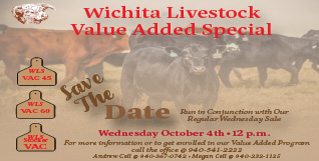Farm & Ranch
Texas crop weather, Jan. 20, 2015
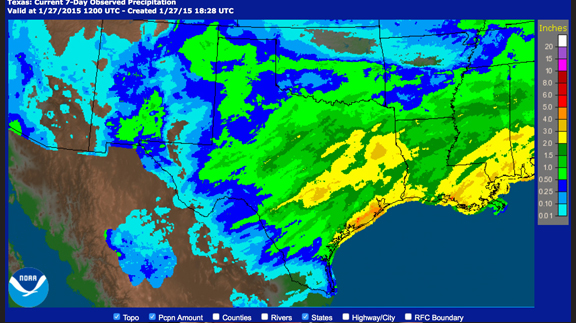
By: Robert Burns
Rains improve pasture, wheat outlook, but bring soggy fields
Writer: Robert Burns, 903-834-6191, [email protected]
COLLEGE STATION – All of the state received moisture in one form or another during the last week, which generally benefited forages and crops, but slowed fieldwork, according to reports from Texas A&M AgriLife Extension Service personnel.
Parts of the Central, East and Coastal Bend areas received from 3 to 4 inches since Jan. 20, according to the National Weather Service. From 1 inch to 1.5 inches was common for much of the rest of the state, even for parts of the Panhandle and Rolling Plains. The South, Far West regions and parts of the Panhandle only received 0.5 inch or less of moisture.
Download or preview a two-minute version of this report
Hardly any agricultural producer would disparage the moisture, according to AgriLife Extension county agent reports, though the timing of the rain did make field operations difficult in some areas, including the finishing of cotton harvest.
“Producers are digging out from the recent snowstorm this week of 4 to 10 inches,” reported said Rick Auckerman, AgriLife Extension agent for Deaf Smith County, west of Amarillo. “The moisture is welcome, but the snow caused some travel problems, and getting feed to the livestock was challenging. The wheat crop is under the snow cover for the most part and makes an excellent insulator from the cold. The area’s cotton crop is still out in the field with approximately 1,000 acres left to strip if possible.”
“Recent wet weather has had farmers laid up,” said Robert Ferguson, AgriLife Extension agent for Mitchell County, west of Abilene. “Most of them are done stripping but there are still a few who need to finish. There are still a lot of modules left in the yards; it will be a late ginning year.”
“We got up to 1 inch of rain on Jan. 22,” said Rick Hirsch, AgriLife Extension agent for Henderson County, Athens. “Field conditions are saturated. Grazing of winter pastures were limited due to muddy conditions for some producers. Hay utilization was heavy for many beef producers.”
“We received anywhere from 1.5 to 2.5 inches of rain late in the week,” said Heath Lusty, AgriLife Extension agent in Lampasas County, north of Austin. “It came down fast enough to provide runoff in some parts of the county and refilled low stock tanks. Wheat and oat pastures look good and should really take off with warmer weather and sunny skies forecast this week.”
“The county has received tremendous rainfall in the past week, causing soil moisture levels to reach surplus in some areas where saturation was extreme,” said Michael Haynes, AgriLife Extension agent for Caldwell County, south of Austin. “Pastures have begun to respond positively, and livestock conditions are also good throughout the county due to ample forage.”
“Some warm, dry days permitted drying to begin but more moisture is in the near future,” said Rogelio Mercado, AgriLife Extension agent for Jim Wells County, west of Corpus Christi. “Planting season is promising to be productive if farmers can get in the field to plant. Some may be behind schedule in applying fertilizer and herbicides.”
AgriLife Extension district reporters compiled the following summaries:
The 12 Texas A&M AgriLife Extension Districts
Central: Soil moisture, rangeland and pasture conditions were good throughout the region. Overall, crops were in good condition and livestock fair. Heavy rains saturated soils and kept producers out of fields. More rain was forecast, which was expected to prevent fieldwork for about another week. Cattle were having a tough go of it this winter due to cold, wet conditions. This meant producers had to feed more hay than normal. T here were some disease issues with wheat. However, the rains filled stock tanks, and forages were in good condition.
Coastal Bend: Small streams and creeks were overflowing after rain. Water levels were slowly receding, but soils were saturated. Most winter wheat planting was completed except where fields were too wet to get into. Oats and ryegrass winter pastures were growly slowly due to rainfall and extended cloudy weather.
East: The region was beset by cold and rainy weather. Trinity County pastures were so saturated they were almost impossible to traverse. Many drivers were getting stuck as soon as they left paved roads. Dirt roads were hard to navigate. Houston County reported more than 5 inches of rain and standing water in most pastures. Some producers were limiting grazing in winter pastures due to the muddy conditions. Truck farmers had a hard time getting land ready for planting. Ponds, lakes and creeks were full. All counties reported adequate to surplus subsoil and topsoil moisture. Livestock producers continued supplying hay and supplemental feed where they could get into fields. Winter pastures needed sunshine for growth. Hay sales increased. Livestock were in fair to good condition. Cattle prices were down. The calving season began. The selling of cull cows and market ready calves continued. Feral hog problems in winter pastures inc reased. Upshur County began gopher control. Anderson County pecans were 100 percent harvested.
Far West: The region was very cold with all moisture coming as freezing rain or snow. Topsoil moisture was mostly described as adequate while subsoil moisture, though improved by the freezing rain, was short to adequate. Pasture and rangeland were mostly in fair to poor condition. The upland cotton harvest was all but completed. Pecans were 95 to 100 percent harvested. Reeves County oats were mostly in good condition. Winter wheat was 50 to 100 percent emerged and mostly in poor condition.
North: The region received from 1 inch to 3 inches of rain, with daytime temperatures in the low 70s and nighttime in the mid-40s. Topsoil moisture was mostly adequate with some counties reporting a surplus. Winter wheat and winter pastures needed sunshine to promote growth, but there were many cloudy days. Rain made fields soggy and a challenge to work. Pond levels and hay supplies were good. Livestock were in good condition, but wet weather caused some stress. Early spring-born calves were growing well, and more calves were being born. Wild hogs were causing a lot of damage.
Panhandle: Temperatures were up and down for the week. Soil moisture varied from very short to adequate, with most reporting short to adequate. Moisture was received late in the week throughout the region, mostly as snow, with accumulations of 1 inch to 14 inches in some areas. The Armstrong County cotton harvest was nearly completed, with only a handful of acres left to pick. Producers were considering seed and fertilizer options. Warmer temperatures and moisture perked up winter wheat. Deaf Smith County had about 1,000 acres of cotton left to strip, if possible. Quality on the late-harvested cotton was much lower, with loan prices considerably less than that of earlier harvested cotton. Lipscomb County winter wheat was moisture stressed and in decline. Supplemental feeding of cattle continued. Rangeland and pastures were mostly in fair to good condition.
Rolling Plains: From 1 inch to 2 inches of rain fell across the region. Counties in the western part of the region reported some snow. Winter wheat was in fair to good condition. Some producers were applying fertilizer. There were also reports of greenbug damage to small grains. The cotton harvest wound down. Livestock remained in fair to good condition, with producers supplying quite a lot of supplemental feed. The pecan harvest was nearly finished. Stock tanks and area lakes still needed moisture.
South Plains: Most of the region received snow, freezing rain or rain. Accumulations ranged from 0.5 to 1 inch of rain, mixed with light freezing drizzle, in the more southern counties, to as much as 3 inches of snow in Lubbock County. Wet conditions kept producers out of fields, but perked up winter wheat and improved rangeland and pastures. Mitchell County still had some cotton left in the field. Only two of the three gins in that county are operational this year. To date, they had ginned a total of 20,000 bales, down from 45,000 bales by this time last year. Livestock were stressed by the cold weather, and producers were supplying supplemental feed.
South: In the northern part of the region, light rains improved rangeland and pastures. Overall, soil moisture ranged from 40 percent to 100 percent adequate. In Frio County, producers finished planting wheat and oats, and continued planting potatoes. Rangeland and pastures improved with the growth of winter grasses, but producers still had to steadily provide supplemental feed. Cattle body condition scores remained fair. The eastern part of the region received light rains, which improved rangeland and pastures that were damaged during the summer drought. Producers were optimistic about spring planting season, hoping soon to be able to get into fields to plant. Some producers were behind in applying fertilizer and herbicides. In Kleberg and Kenedy counties, wet, cool and cloudy conditions continued with very few days of sunlight. Good and constant precipitation during the last 3 to 4 months has provided ideal conditions fo r the upcoming planting season. Soil moisture was generally 40 to 100 percent adequate. In the western part of the region, soil moisture was 50 to 100 percent adequate, with the exception of Zavala County, where soil moisture conditions were 80 percent short. Producers continued preparing fields for next season’s crops. Maverick County winter oats were in good condition. Supplemental feeding was being done at lesser rates on most ranches, and stock-tank water levels remained lower than normal throughout the area. In Zavala County, cold and wet days brought all spinach and cabbage harvesting to a standstill. However, rangeland and pastures benefited from the wet weather. Onions and carrots made good progress. In the southern part of the region, wet conditions halted field preparations for spring planting. Vegetables were progressing well. Hidalgo County citrus and vegetable crop producers continued harvesting where fields were dry enough to get into. Soil moisture conditions were mostly adequate to surplus, except for Starr County, where soil moisture conditions remained 60 to 80 percent short.
Southeast: Soil moisture was mostly adequate to surplus. Rangeland and pastures were in fair to good condition, with “good” being the most common rating. Brazoria County recently received 2 to 4 inches of rain, leaving fields saturated and forcing livestock to higher ground. Intermittent sunlight and warm, dry days dried out fields some, but much warmer, clearer conditions were needed. In Chambers County, the wet and cool weather forced ranchers to feed more hay. In Walker County, early warm-season vegetable planting was underway.
Southwest: The region had 1 inch to 2 inches of rain, with the more western counties receiving some snow and freezing precipitation. Soil moisture was surplus in some areas. Overall, oats and wheat were looking good, though there were some reports of rust and greenbugs. Stock tanks and streams needed runoff before spring green up. Livestock continued to be in fair condition and under supplementation.
West Central: The region had mild days with above-average temperatures early in the week, but turning colder toward the end of the week with good rains and some snow. All areas continued to need more rain to fill very low stock tanks. Farmers were generally unable to work fields because of wet conditions. Cotton harvesting was nearly completed, with just a few fields left to be harvested. Winter wheat was in good condition. Rangeland and pastures were in stable condition for the winter. Livestock remained in fair to good condition with supplemental feeding ongoing. Yearling cattle were doing very well with little reported sickness. The pecan harvest was mostly completed.
-30-
Farm & Ranch
Ag Elsewhere: Wyoming
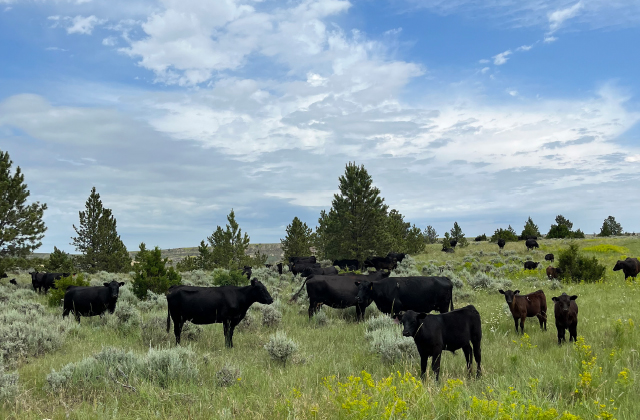
By Tressa Lawrence
Ranchers across northeast Wyoming and the surrounding areas saw record moisture levels in 2023. The year 2024 has seen significantly less moisture to date.
Farm & Ranch
Ag Elsewhere: Montana

By Lindsey Monk
People are finishing up brandings. Here, Danny Walter is shown getting it done.
Farm & Ranch
Animal Disease Traceability
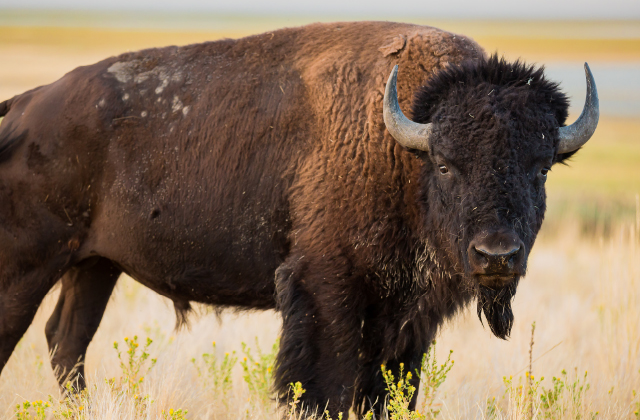
By Barry Whitworth, DVM
On July 6, 2020, the United States Department of Agriculture Animal and Plant Health Inspection Service (APHIS) posted in the Federal Register a proposal that radio frequency identification tags be used as official identification for cattle and bison. Following a period for public comment, the USDA APHIS released a statement on April 24, 2024, with the amended animal disease traceability (ADT) regulation for cattle and bison. The full press release may be found at https://www.aphis.usda.gov/news/agency-announcements/aphis-bolsters-animal-disease-traceability-united-states. Under the new rule, cattle and bison will need to be identified with tags that are both visual and electronic.
The USDA defines ADT as knowing where diseased and at-risk animals are, where they have been, and when the animal disease event took place. A system that allows for efficient traceability of livestock in the United States is essential for animal health and reducing the economic effect of a foreign animal disease outbreak and other diseases on livestock producers as well as others whose well-being depends on livestock production.
To read more, pick up a copy of the July issue of NTFR magazine. To subscribe by mail, call 940-872-5922.
-
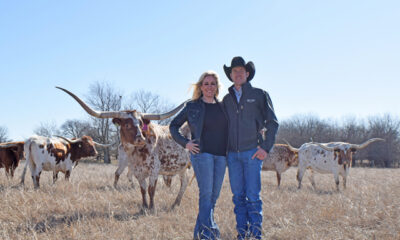
 Country Lifestyles1 year ago
Country Lifestyles1 year agoScott & Stacey Schumacher: A Growth Mindset
-
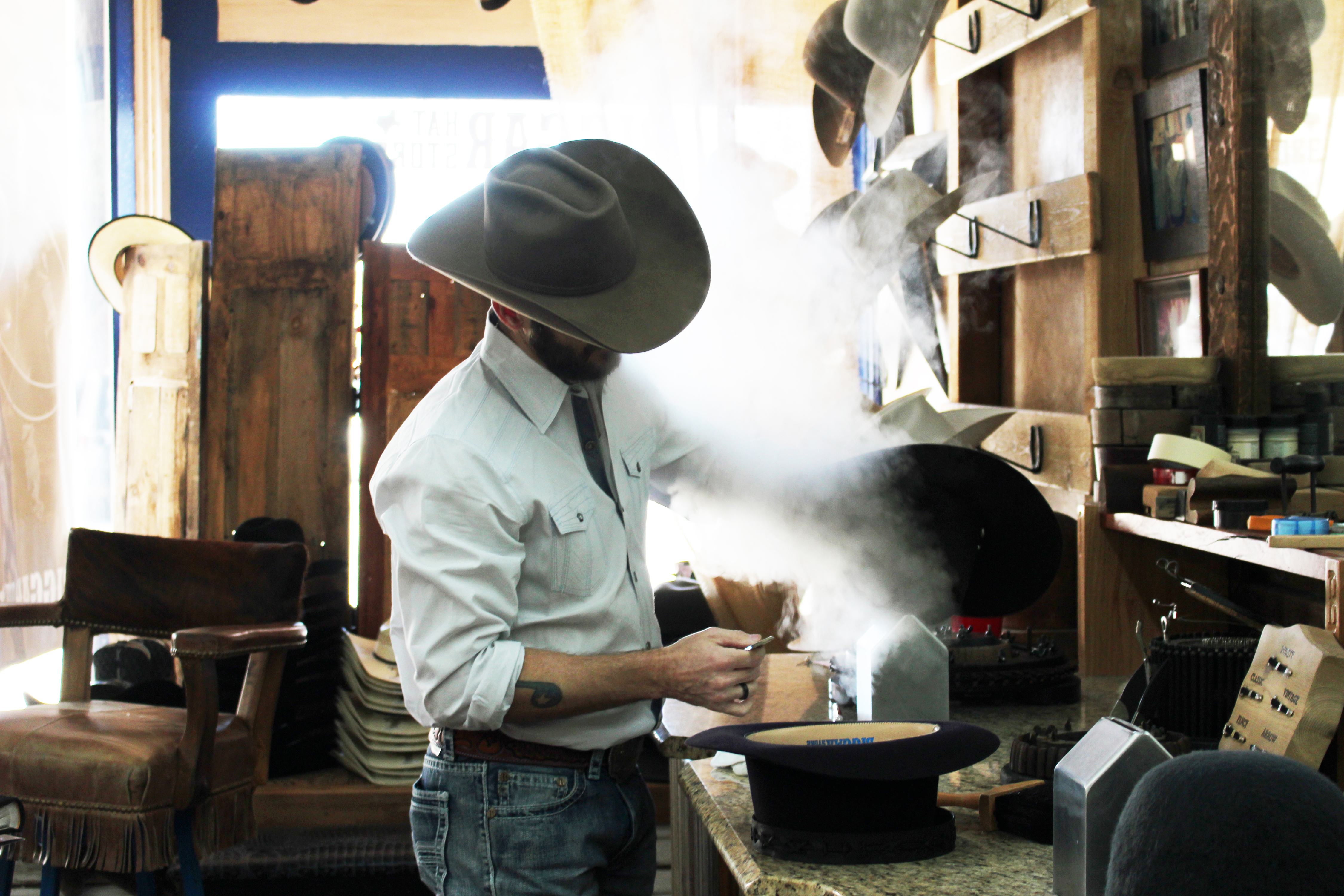
 Country Lifestyles7 years ago
Country Lifestyles7 years agoStyle Your Profile – What your style cowboy hat says about you and new trends in 2017
-

 Equine10 months ago
Equine10 months agoThe Will to Win
-
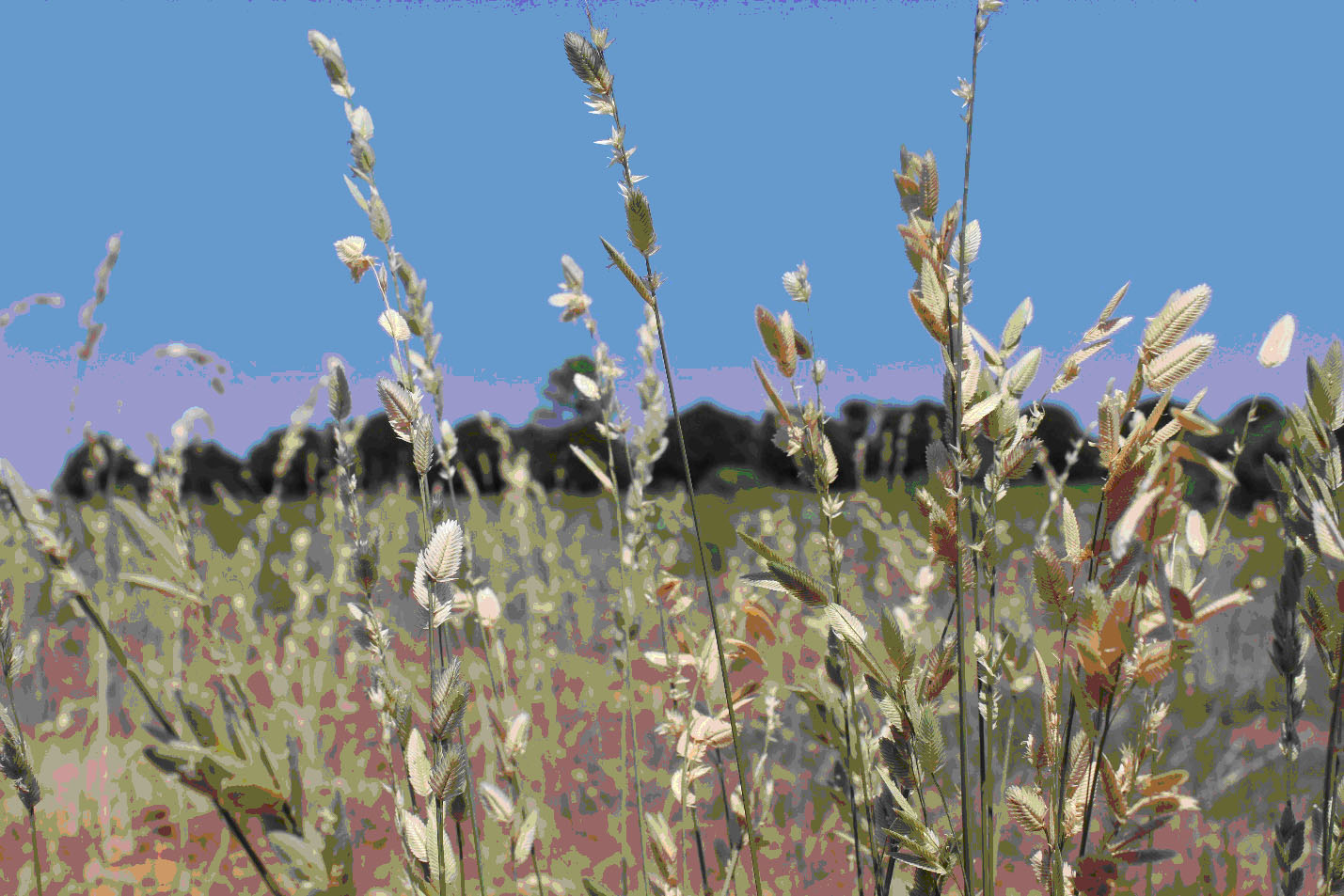
 HOME7 years ago
HOME7 years agoGrazing North Texas – Wilman Lovegrass
-
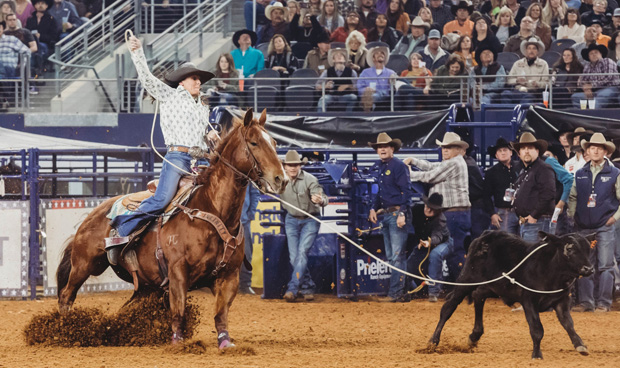
 Country Lifestyles4 years ago
Country Lifestyles4 years agoAmber Crawford, Breakaway Roper
-
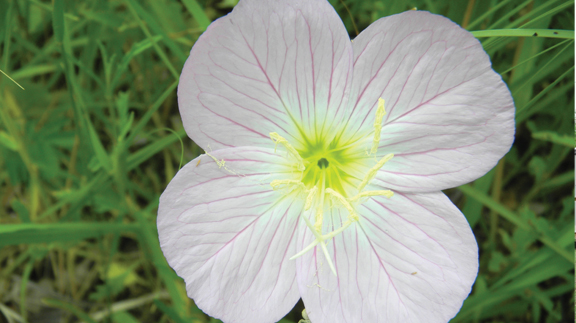
 Outdoor9 years ago
Outdoor9 years agoButtercup or Primrose?
-
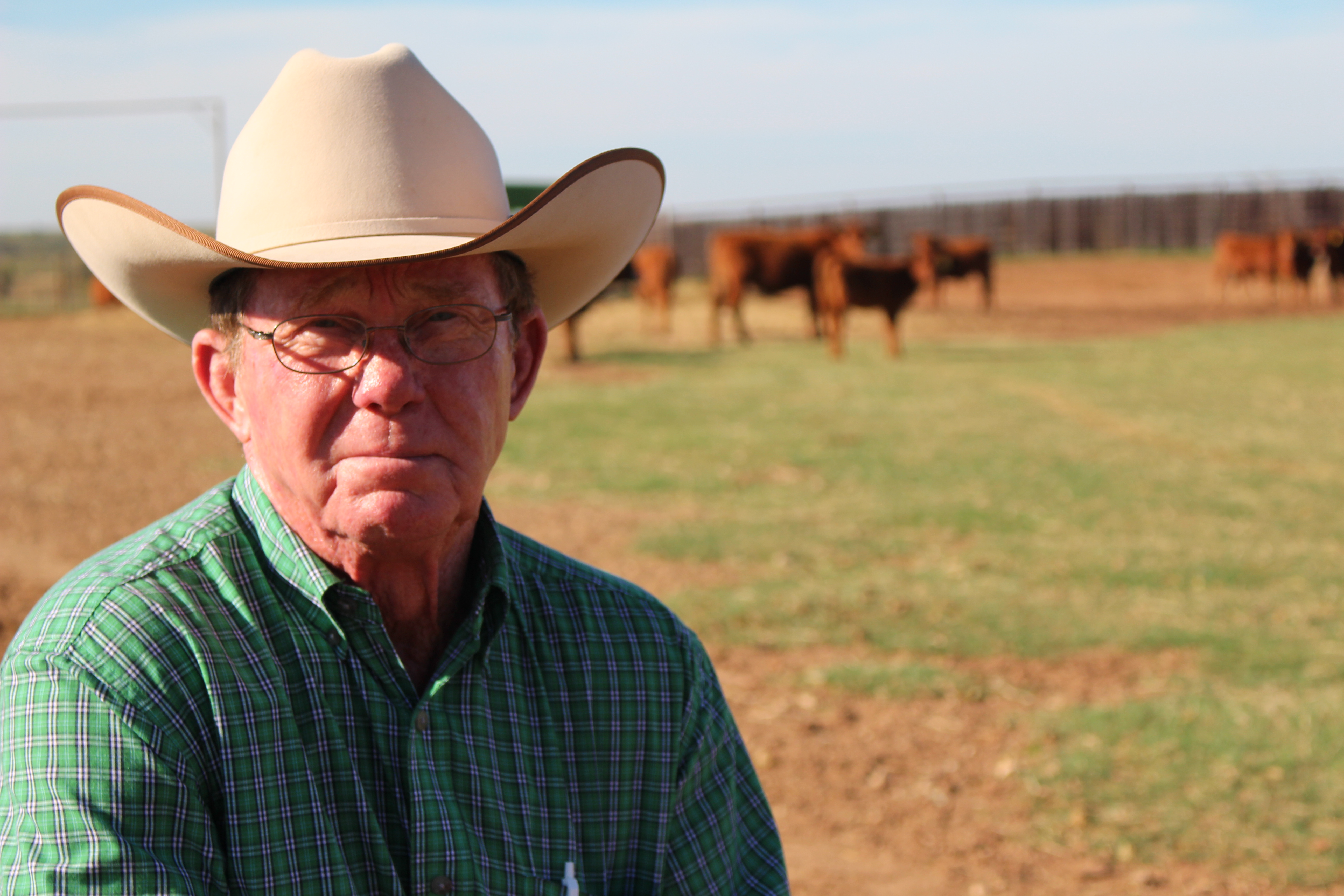
 Country Lifestyles8 years ago
Country Lifestyles8 years agoDecember 2016 Profile, Rusty Riddle – The Riddle Way
-
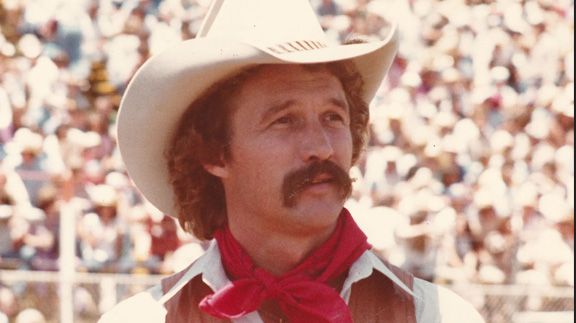
 Country Lifestyles8 years ago
Country Lifestyles8 years agoJune 2016 Profile – The man behind the mic: Bob Tallman

